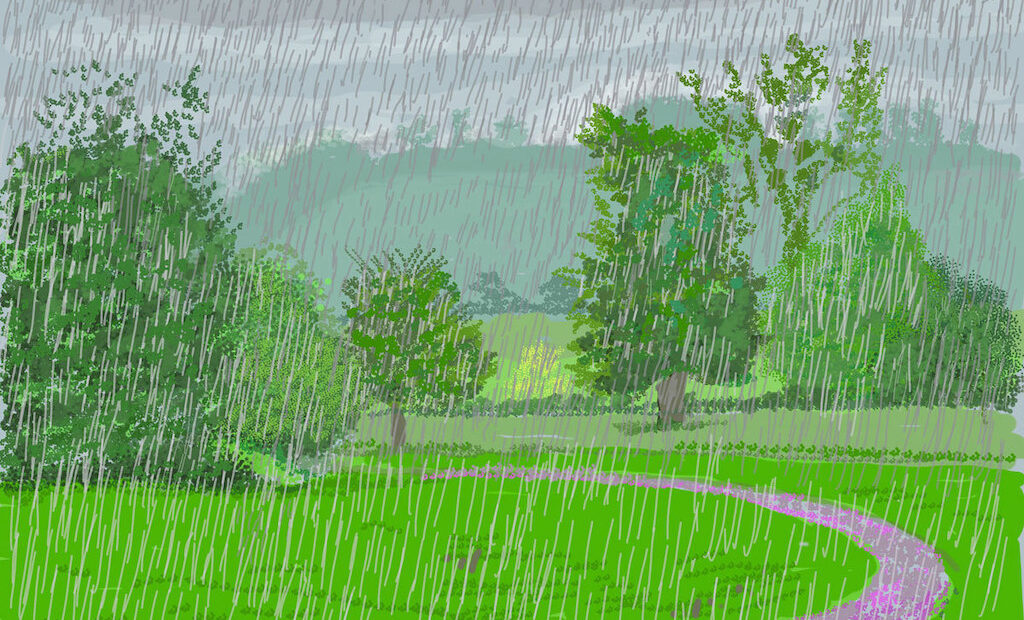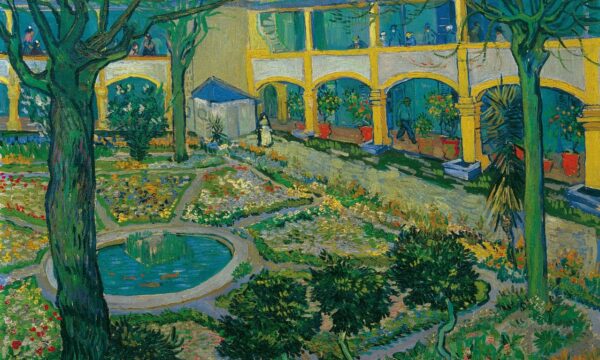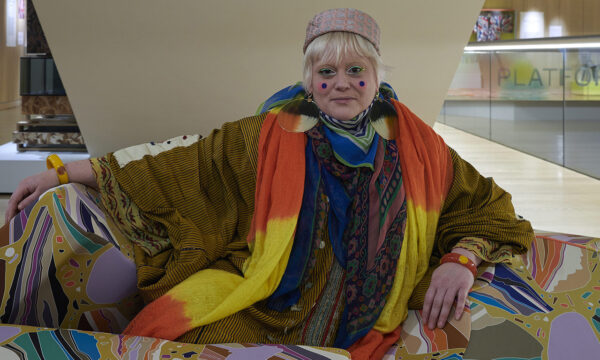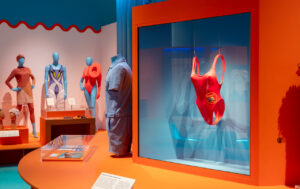David Hockney: The Arrival of Spring, Normandy, 2020 at the Royal Academy of Arts

From youthful, peroxide blond rebel in those distinctive red glasses to the distinguished Academician of today, David Hockney’s career has taken him from post-war Bradford to early 60s London, from the sun-drenched vistas of California to the gentle hills of the East Ridings. Over the decades the Yorkshireman has shown a forthright refusal to conform, whether it be his work’s open consideration of his homosexuality at the Royal College of Art, or his much-publicised opinions on what he considers draconian public smoking laws. A committed member of the cigarette puffing fraternity, Hockney at least in part brought his ten-year stint in Bridlington to a close due to profound irritation at being dictated to on these matters by the “Nanny State”.
In 2013 the artist returned to the East Coast of the US, and what followed was an eventful ten years. In the land of his birth, both the 2012 retrospective at the RA and the Tate Britain’s 2017 career summation attracted huge crowds. A minor stroke in 2012 seems to have, if anything triggered an increase in Hockney’s productivity. Then, two years ago, the man routinely described as one of the world’s greatest living artists took the decision to seek out a property in the Normandy, France that excited the painterly ambitions of the Impressionists.
As Europe went into lockdown last March, David Hockney embarked upon a series of plein air works at his newly acquired 17th-century French farmhouse, La Grande Cour, set in four acres. Created over the course of four months, these 116 pieces can now be seen on the walls of the Royal Academy’s reopening show: David Hockney: The Arrival of Spring, Normandy, 2020. Those of cynical mind might ask why the august institution needs another exhibition of such a garlanded artist, and yet it would be a hardened character indeed not to sense Hockney’s tangible joy here.
Hockney has long explored new technologies, adopting the iPad and Stylus in 2010. For this latest series, he has used the Brushes app and printed the “paintings” onto paper. The Arrival of Spring sees the celebrated Englishman making full use of his virtuosity with the device to capture nature reawakening in the rural French idyll, throwing himself headlong into depicting the changing seasons of Normandy. One sees verdant fields behind theatrically branched trees, some standing leafless and stark, others so dense with blossom they appear liable to collapse. It’s the drama of seasonal change.
There’s real exuberance in his imagery and mark-making, even in compositions like 110/No.346, 2nd May 2020, where Hockney finds repeated concentric beauty in a torrential downpour peppering a pond. In the opening room, the visitor sees an animated green vista depicted in 84/ No.292, 28th April 2020. A pathway rendered in pink loops into the middle ground of trees as a thick veil of grey and yellow staccato rain transforms the otherwise idyllic scene into a haze. Elsewhere, in 79/No.245, 26th April 2020 and 80/No.258, 27th April 2020 there are spectacular deep orange and purple sunsets. As the sun disappears behind the horizon, the artist studies how it shrouds rounded hedges, immediately recalling Monet’s Haystacks (Giverny being nearby). Later this year, Hockney is to be granted the honour of displaying his Arrival of Spring series beside the great Impressionist’s immortal Nymphéas, the waterlilies, in Paris’s Musée de l’Orangerie. The Englishman has created studies of his own pond’s waterlilies, complete with reflections.
Still lifes also feature here: 58/No.181, 10th April 2020 is a carefully studied branch of white and pale pink flowers, beneath which Hockney has playfully written “Cheerry Blossom”, before crossing out the first “e”. Apparently, he was lured to Normandy by its cherry, pear, plum and apple tree blossom. The tranquil contentment the artist finds in this environment is pronounced in his compositions of the garden’s flowerbeds. The evidently digital mark-making of 60/No.186, 11th April 2020, where a medley of plants and flowers are shown emerging from rich soil, does not detract from the overall impression of nature’s rebirth.
This doesn’t represent the first time David Hockney has chosen to make as his subject the changing seasons; that decade in Bridlington contemplating the East Riding landscape energised his 2012 exhibition at the Royal Academy, A Bigger Picture. Sometimes, the technological media has its limitations with the textural effects possible with oil and acrylic elusive even to this lauded draughtsman. However, what the nation needs after the dreadful last year is a rekindling of the spirits. As the UK gradually moves towards some form of normality again, this 83-year-old’s life-affirming celebration of the unfolding of spring in his Norman pastoral paradise promises to strike a chord.
James White
David Hockney: The Arrival of Spring, Normandy, 2020 is at the Royal Academy of Arts from 23rd May until 26th September 2021. For further information visit the exhibition’s website here.





















Facebook
Twitter
Instagram
YouTube
RSS